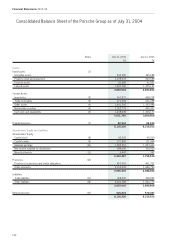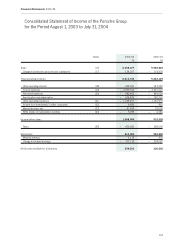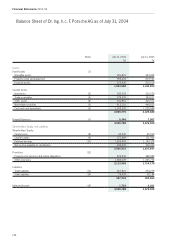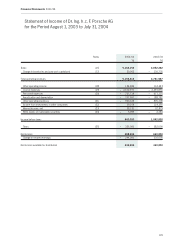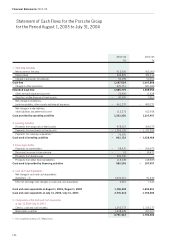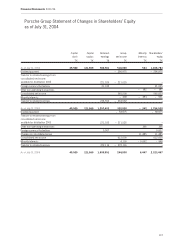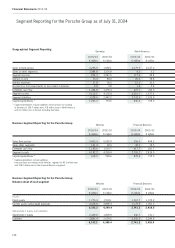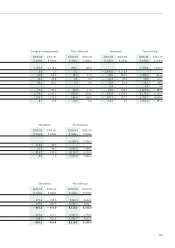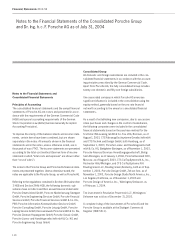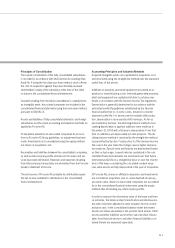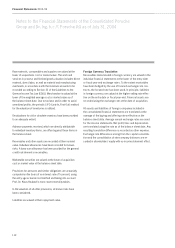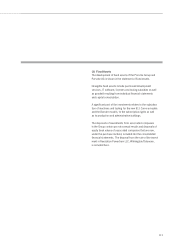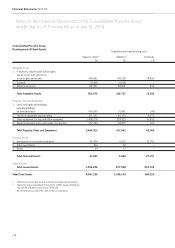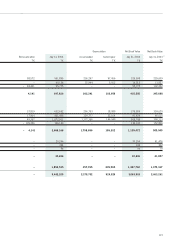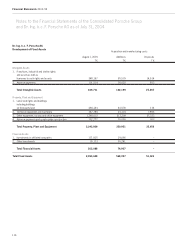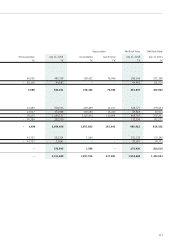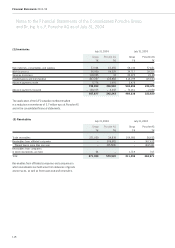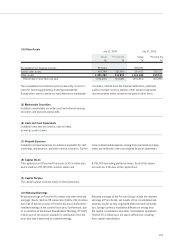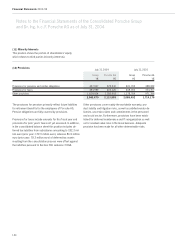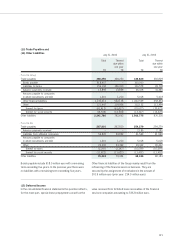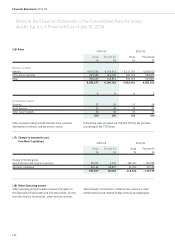Porsche 2003 Annual Report Download - page 116
Download and view the complete annual report
Please find page 116 of the 2003 Porsche annual report below. You can navigate through the pages in the report by either clicking on the pages listed below, or by using the keyword search tool below to find specific information within the annual report.
112
Financial Statements 2003 ⁄ 04
Notes to the Financial Statements of the Consolidated Porsche
Group and Dr. Ing. h.c. F. Porsche AG as of July 31, 2004
Raw materials, consumables and supplies are valued at the
lower of acquisitions cost or market value. The work and
services in process and finished goods valuation includes direct
material, direct labor, as well as material and manufacturing
overheads, in accordance with the minimum amounts to be
recorded according to Section 33 of the Guidelines to the
German Income Tax Law (EStG). Merchandise is valued at the
lower of the weighted average cost or market value as of
the balance sheet date. Due to tax laws and in order to avoid
unrealized profits, the periodic LIFO (Last-In, First-Out) method
for the valuation of inventories is utilized.
Devaluations for old or obsolete inventory have been provided
to an adequate extent.
Advance payments received, which are directly attributable
to individual inventory items, are offset against these items in
the balance sheet.
Receivables and other assets are recorded at their nominal
value. Individual allowances have been recorded for known
risks. A lump-sum allowance has been provided for the general
credit risk inherent in receivables.
Marketable securities are valued at the lower of acquisition
cost or market value at the balance sheet date.
Provisions for pensions and similar obligations are actuarially
computed on the basis of an interest rate of 5 percent, using
the entry age actuarial cost method and taking into account
Prof. Dr. Klaus Heubeck’s most recent mortality tables.
In the valuation of all other provisions, all known risks have
been considered.
Liabilities are valued at their repayment value.
Foreign Currency Translation
Receivables denominated in foreign currency are valued in the
individual financial statements at the lower of the entry date
or fiscal year-end exchange rates. To the extent receivables
have been hedged by the use of forward exchange rate con-
tracts, the forward rate has been used. In principle, liabilities
in foreign currency are valued at the higher selling rate effec-
tive on the entry date or fiscal year-end. Financial assets are
recorded using the exchange rate at the date of acquisition.
All assets and liabilities of foreign companies included in
the consolidated financial statements are translated at the
average of the buying and offering rates effective on the
balance sheet date. Average annual exchange rates are used
for the income statements. Net profit/loss and depreciation
are translated using the rate as of the balance sheet date. Any
resulting translation difference is recorded as other expense.
Exchange rate differences arising from the capital consolida-
tion and the consolidation of intercompany balances are re-
corded in shareholders’ equity with no income statement effect.


